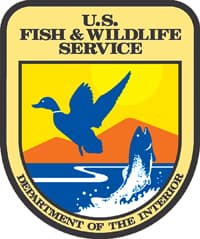ENDANGERED SPECIES Proactive Efforts to Preserve At-risk Species Pays Dividends
OutdoorHub 05.14.14

A collaborative effort with federal and state agencies in the Southeast, industry and private landowners to proactively conserve at-risk species is starting to pay dividends.
Thanks to new information, five more species will not require federal protection under the Endangered Species Act. The five species were under evaluation for possible listing as a threatened or endangered species are southeastern crayfishes that occur in parts of Alabama, Georgia and Mississippi. They are the blackbarred crayfish, burrowing bog crayfish, Chattooga River crayfish, lagniappe crayfish and least crayfish.
The new information came from several sources, including the Alabama Department of Conservation and Natural Resources, the Geological Survey of Alabama, and Dr. Susan Adams of the U.S. Forest Service’s Southern Research Station. They provided valuable data and supporting information.
In addition, Service-funded surveys of the crayfish were conducted over the course of the last three years by three regional crayfish experts: Dr. Chris Taylor of the Illinois Natural History Survey; Dr. Guenter Schuster, a retired biology professor from Eastern Kentucky University; and Dr. Bob Jones from the Mississippi Department of Wildlife, Fisheries, and Parks’ Museum of Natural Science.
“We’re excited about leading the way with the U.S. Fish and Wildlife Service. This proactive conservation effort is keeping Alabama’s wildlife under state management,” said Charles “Chuck” Sykes, Director of the Alabama Division of Wildlife and Fisheries. “By pooling our resources, we’re learning more about our species, bringing efficiency to conservation, and making a difference on the landscape for the people of Alabama.”
The Service’s Southeast Regional Director Cindy Dohner said, “This is a great example of the value of having the best information as we evaluate whether to extend federal protection to fish, plants and other wildlife. Decisions, based on the best science, enable us to focus our limited resources on those species that need them the most. That’s good for fish and wildlife and it’s cost effective.”
Today, the average federal administrative cost to list a single species can run into the hundreds of thousands of dollars, a price tag that will be avoided in light of this new scientific information. By comparison, the cost incurred to conduct surveys and research on these crayfish totaled about $62,000. That’s a significant savings to federal taxpayers.
Precluding the need to list additional plants and animals also benefits landowners, including state and federal agencies. Primarily, they avoid additional regulatory burdens.
Fish, wildlife and plants benefit as well. Focusing limited resources where they are most needed helps species win on a larger, landscape scale. In addition, state, federal and private landowners are engaging in voluntary, proactive conservation efforts to boost declining species. The goal is to keep their numbers healthy so they are no longer edging toward extinction when they would require protection under the Endangered Species Act.
The Service’s Southeast Region has been working since 2011 with multiple partners to hopefully avoid the need to list hundreds of other species. Due to litigation and petitions under the Endangered Species Act, the Region is required to evaluate whether more than 400 species need federal protection over the next decade. The Service’s goal is to work with the states, universities, industries, large landowners and many other partners to acquire the best science, document conservation activities already taking place, and proactively conserve as many of these species as possible, so listing will not be necessary.
The five crayfish species were withdrawn earlier this month from one of the largest single petitions ever received by the Service to list species under the Endangered Species Act. Filed in 2010, the mega petition originally included 404 species. That number is now down to 367.
In 2012, two other species were also withdrawn from the mega petition by the petitioner, the Center for Biological Diversity. The Lower Florida Keys striped mud turtle and the seepage salamander were withdrawn due to new information from the Florida Fish and Wildlife Conservation Commission and the published work of researchers from The Pennsylvania State University, Nash Community College and East Carolina University.
For more information about how the Service and other federal agencies and the states are working to proactively conserve more than 400 at-risk species, with the goal of precluding the need for federal protection, please visit www.fws.gov/southeast/candidateconservation.

